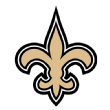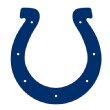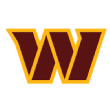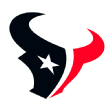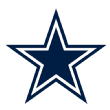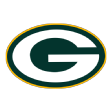Mel Kiper's 2017 'Grade: A' three-round mock draft
It's time for my annual three-round mock draft, which has a simple concept: I'm the general manager for each team at each pick, from No. 1 to No. 107.
I'm not projecting picks based on what I'm hearing around the league. This is me making 107 picks -- three full rounds -- based on what's best for each team at that slot, so that each team gets an "A" grade.
The ground rules:
- At each slot, I make a pick in the best interest of only the team with the pick. I won't pass on a player at No. 4 just because I like the team at No. 5 better.
- No trades unless they have already happened. I try to address team needs, but as with the actual draft, value can supersede need.
- Once again, I'm not projecting. It's more a look at where I see value up and down the board, based on my rankings.

Cleveland Browns
Round 1 (1): Myles Garrett, DE, Texas A&M
Round 1 (12): Mitchell Trubisky, QB, North Carolina
Round 2 (33): Jourdan Lewis, CB, Michigan
Round 2 (52): Josh Jones, S, NC State
Round 3 (65): Kareem Hunt, RB, Toledo
The Browns really need to hit on these picks in the top 65. They had 15 picks last year but hit on few difference-makers (I gave them a C+ in my regrades). They have needs at almost every position. This slate would give Cleveland my top-ranked pass-rusher (and overall prospect) and top-ranked quarterback with its first two picks. Those are franchise-changing prospects. Trubisky is going to need some time to adjust to the league, but he has a high ceiling. The undersized Lewis will probably be available at the top of the second round, as there will be a run on corners on Day 1. Lewis is my seventh corner off the board here. Jones is tremendously athletic, running a 4.41 40 at the combine at 220 pounds, and could contribute immediately. Hunt is a downhill runner who breaks tackles and has some value as a receiver out of the backfield.
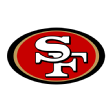
San Francisco 49ers
Round 1 (2): Solomon Thomas, DL, Stanford
Round 2 (34): Patrick Mahomes II, QB, Texas Tech
Round 3 (66): Quincy Wilson, CB, Florida
I have Jonathan Allen rated higher than Thomas, but Thomas is a better fit in San Francisco. He has double-digit sack potential and is a different player than the D-linemen the 49ers have taken in the first round the past two years (DeForest Buckner and Arik Armstead). Could he even play some outside linebacker in the Niners' 3-4? I moved Mahomes ahead of Clemson's Deshaun Watson in my quarterback rankings. He's one of my favorite players to watch in the class, and you can't deny his natural tools. Mahomes would give new coach Kyle Shanahan a developmental prospect with which to work. The 49ers brought in Brian Hoyer in free agency, and he could play while Mahomes gets used to the speed of the NFL. Wilson is a big corner (6-foot-1, 211 pounds) without ideal speed (4.54 40 at the combine), but he could compete for a starting spot in San Francisco. Getting Wilson at the top of Round 3 would be a steal.

Chicago Bears
Round 1 (3): Jamal Adams, S, LSU
Round 2 (36): DeMarcus Walker, DE, Florida State
Round 3 (67): Damontae Kazee, CB, San Diego State
Chicago added cornerbacks Prince Amukamara and Marcus Cooper in free agency, so I'm going with a safety here. Adams is a do-it-all defender with All-Pro potential. Walker is versatile and a hard-worker who could start at defensive end in the Bears' 3-4. He had 16 sacks for the Seminoles last season. Kazee is a ball hawk who had 15 interceptions the past two seasons. He isn't big (5-foot-10, 184 pounds), and he didn't run fast at the combine (4.54 40), and that could drop him into the fourth round. But if I were the GM of a team that needed a slot corner in the third round, Kazee would be my guy. Neither Amukamara nor Cooper is an inside corner. I think Kazee will have a better career than some of the corners who get picked in the second round. He's underrated.
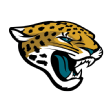
Jacksonville Jaguars
Round 1 (4): Jonathan Allen, DL, Alabama
Round 2 (35): Evan Engram, TE, Ole Miss
Round 3 (68): Aviante Collins, OT, TCU
Stick Allen at defensive tackle next to $85 million man Malik Jackson, and let him get after quarterbacks and disrupt running games. Yes, Jacksonville has spent a lot of money on its defensive line the past two seasons, but Allen is worth it. He had 23 sacks the past two seasons. There has been some talk of the Jags taking O.J. Howard at No. 4, but this scenario would give them Engram, my No. 2-ranked tight end, at the top of the second round. He's a pass-catcher, and after trading away Julius Thomas, Jacksonville sorely needs a replacement. Collins is an athletic, developmental guy who could play right tackle or guard. His 4.81 40 at the combine was by far the fastest among offensive linemen, and it forced scouts to head back to the tape.
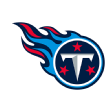
Tennessee Titans
Round 1 (5): Reuben Foster, ILB, Alabama
Round 1 (18): Marlon Humphrey, CB, Alabama
Round 3 (83): Mack Hollins, WR, North Carolina
Round 3 (100): Bucky Hodges, TE, Virginia Tech
Tennessee has two first-round picks after trading down from No. 1 with the Rams last year, but the Titans traded back up with Cleveland and lost their second-round pick in 2018. That means they have a huge gap after picking No. 18. I think the Titans have three clear needs: cornerback, wide receiver and inside linebacker. I don't have a corner or receiver in my top five, but I do have Foster ranked that high. He's that good, an every-down linebacker with elite range. Tennessee just released Jason McCourty, and Humphrey could step in and start immediately. The 6-foot-4 Hollins, a former walk-on, and 6-foot-6 Hodges would give Marcus Mariota two productive targets with upside.

New York Jets
Round 1 (6): O.J. Howard, TE, Alabama
Round 2 (39): Deshaun Watson, QB, Clemson
Round 3 (70): Dan Feeney, OG, Indiana
Round 3 (107): Alex Anzalone, OLB, Florida
The Jets might be hesitant to take a tight end so high, but Howard has all the traits of a future All-Pro. In this scenario, I have the Jets passing on a quarterback at No. 6 -- remember, I don't have Mitchell Trubisky as a top-20 prospect -- and taking Watson with their second pick. I don't expect Watson to make it to Round 2, but he's my third-ranked quarterback. Yes, that's back-to-back second-round picks on quarterbacks for the Jets, who took Christian Hackenberg last year, but I don't see their long-term starter on their roster. Watson has a lot of potential, but he had an inconsistent junior season. Feeney was a four-year starter who also played some tackle for the Hoosiers. Anzalone had injury issues throughout college and played only 31 games, but he has the size and athleticism to play inside or outside linebacker.

Los Angeles Chargers
Round 1 (7): Mike Williams, WR, Clemson
Round 2 (38): Dion Dawkins, OL, Temple
Round 3 (71): Jaleel Johnson, DT, Iowa
Keenan Allen has played only nine games the past two seasons, and former undrafted free agent Tyrell Williams led the Chargers in receiving last season. Give Philip Rivers another big-time target, and the Chargers could be one of the most-improved teams in the league in 2017. Los Angeles could use another offensive tackle, but there aren't any elite tackles in this class. Dawkins started at left tackle the past three seasons for the Owls, but he's likely to be a guard at the next level. Grabbing a potential immediate starter in the second round is a smart move. At 6-foot-3, 316 pounds, Johnson is a good pass-rusher from the interior; he had 7.5 sacks last season.



